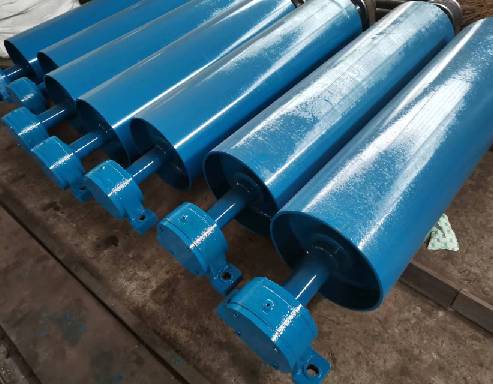 Afrikaans
Afrikaans  Albanian
Albanian  Amharic
Amharic  Arabic
Arabic  Armenian
Armenian  Azerbaijani
Azerbaijani  Basque
Basque  Belarusian
Belarusian  Bengali
Bengali  Bosnian
Bosnian  Bulgarian
Bulgarian  Catalan
Catalan  Cebuano
Cebuano  Corsican
Corsican  Croatian
Croatian  Czech
Czech  Danish
Danish  Dutch
Dutch  English
English  Esperanto
Esperanto  Estonian
Estonian  Finnish
Finnish  French
French  Frisian
Frisian  Galician
Galician  Georgian
Georgian  German
German  Greek
Greek  Gujarati
Gujarati  Haitian Creole
Haitian Creole  hausa
hausa  hawaiian
hawaiian  Hebrew
Hebrew  Hindi
Hindi  Miao
Miao  Hungarian
Hungarian  Icelandic
Icelandic  igbo
igbo  Indonesian
Indonesian  irish
irish  Italian
Italian  Japanese
Japanese  Javanese
Javanese  Kannada
Kannada  kazakh
kazakh  Khmer
Khmer  Rwandese
Rwandese  Korean
Korean  Kurdish
Kurdish  Kyrgyz
Kyrgyz  Lao
Lao  Latin
Latin  Latvian
Latvian  Lithuanian
Lithuanian  Luxembourgish
Luxembourgish  Macedonian
Macedonian  Malgashi
Malgashi  Malay
Malay  Malayalam
Malayalam  Maltese
Maltese  Maori
Maori  Marathi
Marathi  Mongolian
Mongolian  Myanmar
Myanmar  Nepali
Nepali  Norwegian
Norwegian  Norwegian
Norwegian  Occitan
Occitan  Pashto
Pashto  Persian
Persian  Polish
Polish  Portuguese
Portuguese  Punjabi
Punjabi  Romanian
Romanian  Russian
Russian  Samoan
Samoan  Scottish Gaelic
Scottish Gaelic  Serbian
Serbian  Sesotho
Sesotho  Shona
Shona  Sindhi
Sindhi  Sinhala
Sinhala  Slovak
Slovak  Slovenian
Slovenian  Somali
Somali  Spanish
Spanish  Sundanese
Sundanese  Swahili
Swahili  Swedish
Swedish  Tagalog
Tagalog  Tajik
Tajik  Tamil
Tamil  Tatar
Tatar  Telugu
Telugu  Thai
Thai  Turkish
Turkish  Turkmen
Turkmen  Ukrainian
Ukrainian  Urdu
Urdu  Uighur
Uighur  Uzbek
Uzbek  Vietnamese
Vietnamese  Welsh
Welsh  Bantu
Bantu  Yiddish
Yiddish  Yoruba
Yoruba  Zulu
Zulu Understanding the Role of Rollers and Idlers in Conveyor System Performance and Efficiency
Understanding Rollers and Idlers Critical Components in Conveyor Systems
Conveyor systems are integral to modern manufacturing and material handling processes. They facilitate the efficient movement of goods, ensuring that products reach their destinations in a timely and organized manner. Among the various components of these systems, rollers and idlers play a pivotal role in their functionality and performance. This article will delve into the significance of rollers and idlers, exploring their types, functions, and impact on operational efficiency.
What are Rollers and Idlers?
Rollers are cylindrical components that support the movement of materials along the conveyor belt. They are designed to transfer the load and facilitate smooth movement, minimizing friction and wear on the belt. Rollers are generally categorized into different types, including drive rollers, return rollers, and impact rollers, each serving distinct purposes in the conveyor system.
Idlers, on the other hand, are non-powered rollers that support the conveyor belt along its path. They ensure that the belt maintains proper tension and alignment. Idlers can be found in various configurations, including troughing idlers, flat idlers, and training idlers. The proper selection and arrangement of idlers are crucial for maintaining the efficiency of the conveyor system, as they help prevent issues like belt sagging and skewing.
The Functions of Rollers and Idlers
The primary function of rollers is to enable the smooth movement of materials on a conveyor system. By reducing friction, rollers allow the conveyor belt to glide seamlessly over the surface, thus reducing the energy required to transport goods. For instance, drive rollers are responsible for moving the belt, powered by a motor that transfers energy to the rollers, while return rollers help collect the belt after it has completed its cycle.
rollers and idlers

Idlers serve multiple functions, including supporting the conveyor belt and distributing load evenly across the system. Specifically, troughing idlers are designed to create a “V” shape that helps contain bulk materials on the belt, preventing spillage and ensuring that materials are transported efficiently. Furthermore, training idlers are crucial for maintaining the correct alignment of the belt, which is essential for preventing wear and prolonging the lifespan of the conveyor system.
Impact on Operational Efficiency
The efficiency of a conveyor system heavily relies on the proper functioning of rollers and idlers. If these components are not appropriately chosen or maintained, it can lead to increased operational costs and reduced productivity. For example, worn-out rollers can cause excessive friction, leading to energy loss and potential damage to the conveyor belt. Similarly, improperly aligned idlers can result in belt misalignment, causing further wear and tear as well as potential downtime.
Regular maintenance and replacement of rollers and idlers are essential practices in ensuring the longevity and efficiency of conveyor systems. Businesses must establish a routine inspection schedule to identify any signs of wear or damage promptly. By investing in high-quality rollers and idlers, companies can enhance the reliability of their operations, reducing the likelihood of unexpected breakdowns and costly repairs.
Conclusion
In conclusion, rollers and idlers are critical components of conveyor systems that significantly impact their functionality and overall efficiency. By understanding their roles, types, and maintenance requirements, businesses can optimize their material handling processes. In an era where efficiency and productivity are paramount, ensuring the integrity of these components is vital for achieving operational excellence. Through proper selection, installation, and maintenance of rollers and idlers, companies can enjoy smoother operations and a more profitable bottom line.
-
Revolutionizing Conveyor Reliability with Advanced Rubber Lagging PulleysNewsJul.22,2025
-
Powering Precision and Durability with Expert Manufacturers of Conveyor ComponentsNewsJul.22,2025
-
Optimizing Conveyor Systems with Advanced Conveyor AccessoriesNewsJul.22,2025
-
Maximize Conveyor Efficiency with Quality Conveyor Idler PulleysNewsJul.22,2025
-
Future-Proof Your Conveyor System with High-Performance Polyurethane RollerNewsJul.22,2025
-
Driving Efficiency Forward with Quality Idlers and RollersNewsJul.22,2025





























